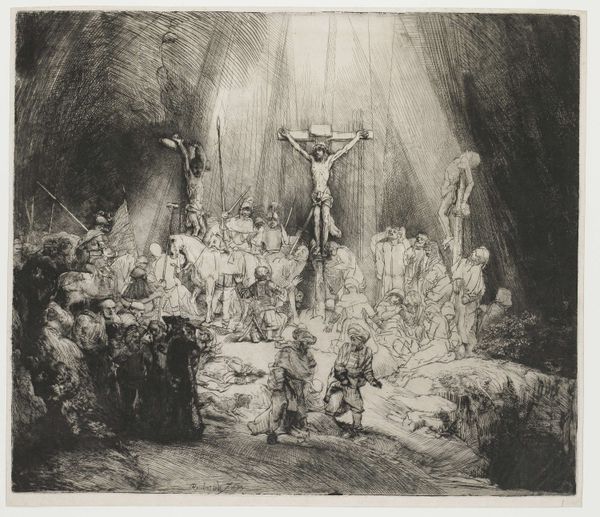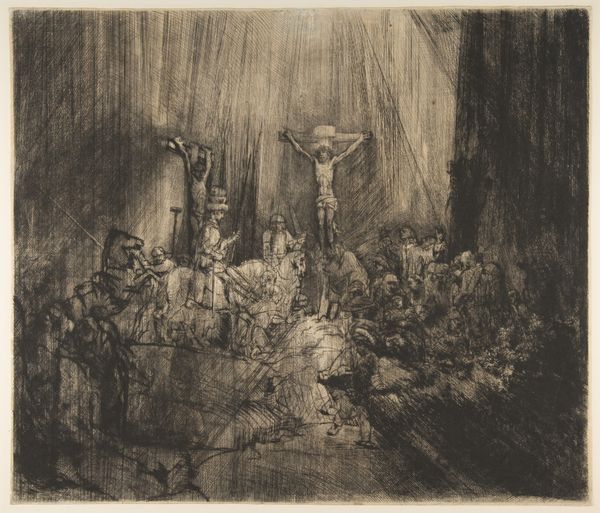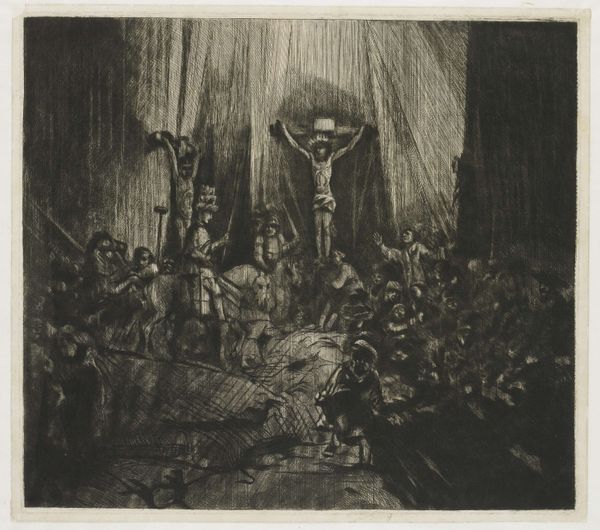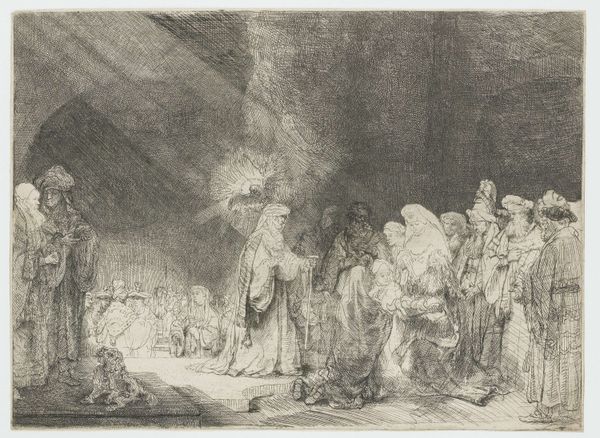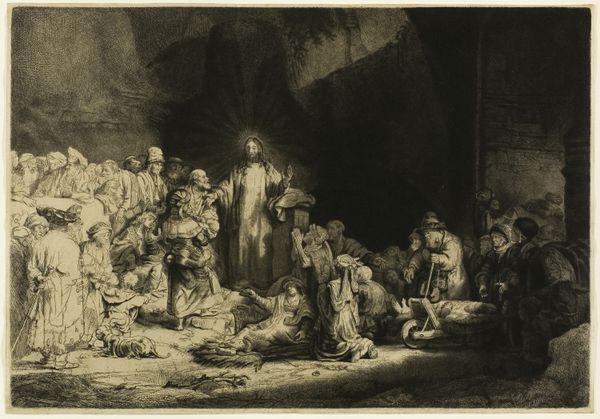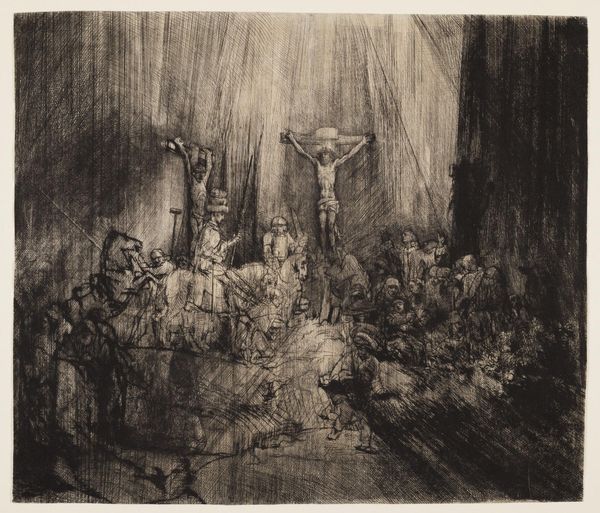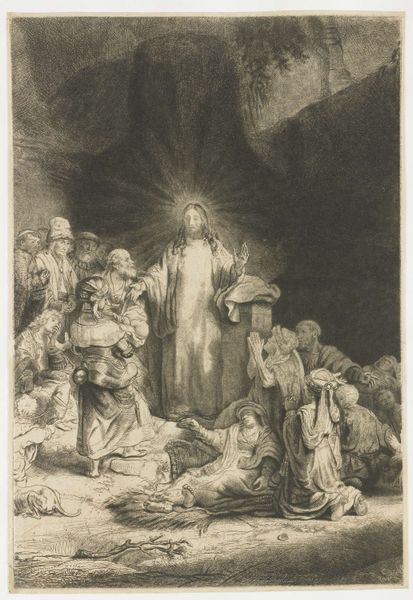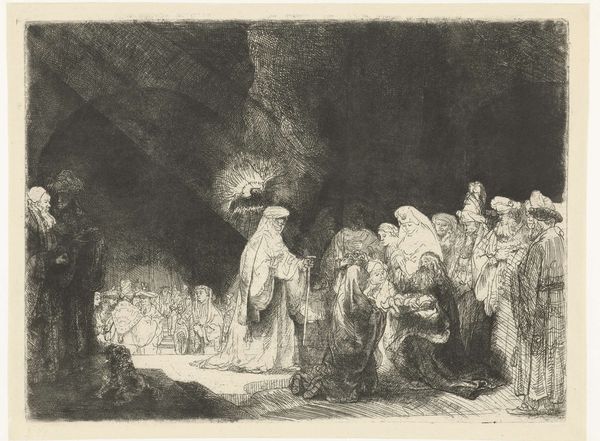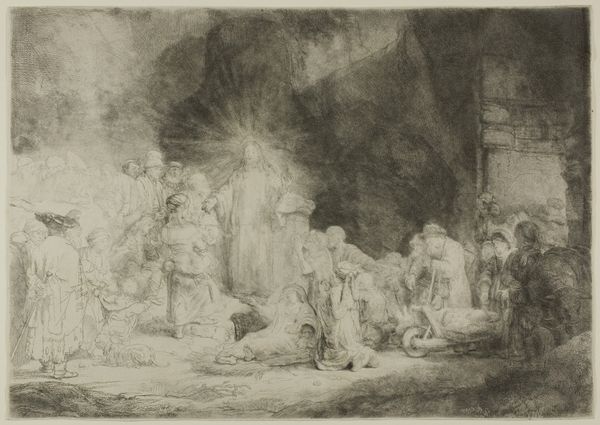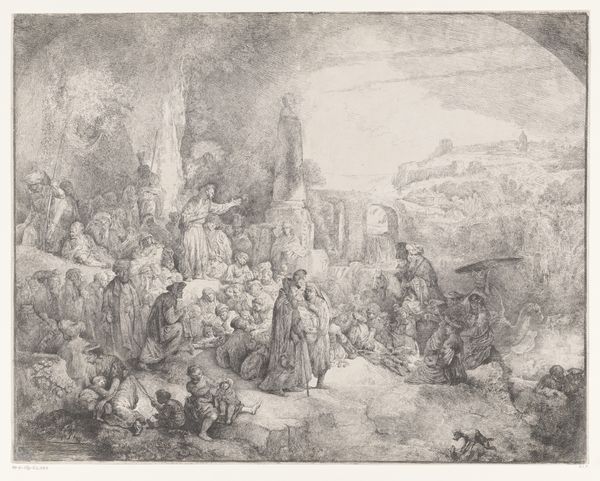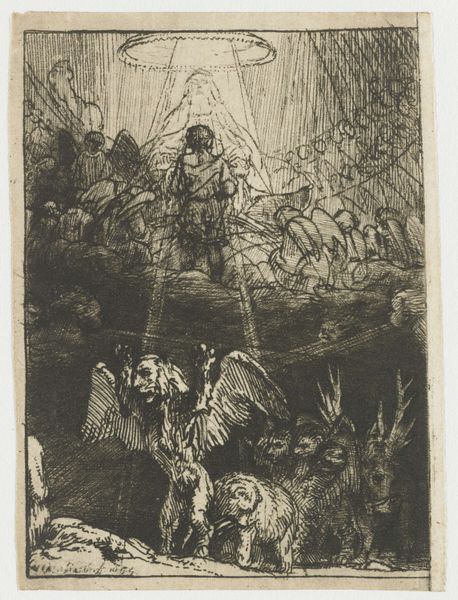
Christ Crucified between the two Thieves: 'The Three Crosses' 1653
0:00
0:00
rembrandtvanrijn
Rijksmuseum
print, etching
#
narrative-art
#
baroque
# print
#
etching
#
charcoal drawing
#
figuration
#
history-painting
#
charcoal
Dimensions: height 380 mm, width 440 mm
Copyright: Rijks Museum: Open Domain
Rembrandt van Rijn created "Christ Crucified between the two Thieves" using drypoint, a printmaking technique, around the middle of the 17th century, a time when the Dutch Republic was a major center for trade, science, and the arts. In this dramatic scene, Rembrandt departs from traditional representations of the crucifixion. Rather than focusing on the divine triumph, he plunges us into the raw, emotional depths of human suffering. The figures, rendered in stark light and shadow, convey a range of reactions from grief to indifference. It’s a scene of societal breakdown, where the sacred and the profane collide. Consider Rembrandt’s own life – his personal struggles and his deep empathy for the marginalized are palpable in the work. The use of light, almost theatrical, evokes a sense of divine reckoning but also intensifies the emotional weight of the scene. Rembrandt’s “The Three Crosses” invites us to confront the complexities of faith, power, and human nature. It's a powerful reminder of our shared mortality, and a testament to the enduring relevance of the human drama.
Comments
No comments
Be the first to comment and join the conversation on the ultimate creative platform.

